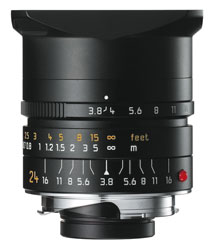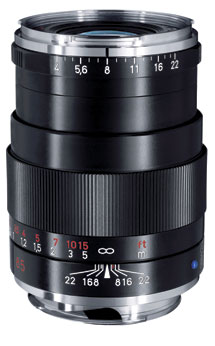Shutterbug’s Exclusive photokina Coverage; Rangefinder Cameras: Leica Steals The Show Page 2
 |
|
|
Ah, yes, the M8.2. I was prepared to be underwhelmed. It looked as though it was merely a slightly tweaked M8, with many of the tweaks downloadable for the older model anyway. Why would I bother? I’d wait until the full-frame M9 came out, a few years down the line.
Then I tried it. All right, the new black paint (replacing black chrome) looks uncommonly lovely, but I’m not the sort of photographer who will trade in a perfectly useful camera just because the new one is prettier. No: what sold me on it is the delayed shutter-cocking action, together with the revised, quieter shutter. Now, the M8.2 sounds much more like a “real” (film) Leica: far less obtrusive. That’s not to say that the old M8 shutter is especially noisy: it’s just noisier than the very slow-moving cloth shutter on film M-series cameras. The M8.2 isn’t. Part of the price you pay for the reduced sound is the loss of the 1/8000 sec top speed, and a slightly lower flash sync speed, but hey, I can live with that. It’s impossible to convey just how nice the new shutter is, but everyone who had heard it at photokina had the same soppy grin on their faces when they talked about it.
The other important change for me is the revised frame-lines, rather bigger than on the M8. Like most M8 users, I got used to estimating how much more would be in the image than I saw in the viewfinder, which was accurate at 1 meter, but unrealistically small at greater distances. Now I’m going to have to readjust, but it’s worth it. The new frames can be retrofitted to the M8, as can the sapphire crystal glass on the back screen; the shutter cannot (or rather it can, but it means changing the whole shutter module so you might as well buy an M8.2).
Something I’m not so sure about, because I haven’t tried it, is the auto-ISO option, which varies the ISO to match your chosen shutter speed/aperture combination. I’m suspicious of it, but this is probably just because I’m suspicious of most innovations as a matter of principle, until I’ve seen for myself that they work. Enough people are enthusiastic that there’s probably a lot to be said for it; but then, a lot of people like autofocus, too, and I am not among them.
Then there’s the snapshot setting, which brings us to something that makes some people unhappy about Leicas. Many photographers buy Leicas because they are superb cameras delivering unequalled image quality. At this point they are expensive tools, to be used by discerning photographers who are eager to exercise maximum control over their images.
Others buy Leicas simply as a luxury brand: the old joke is that they are very expensive snapshot cameras for dentists, architects, and other well-to-do bourgeois. Unfortunately this leads some people—especially those who have never used a Leica, or who cannot afford one—to conclude that snob value is the only reason to buy a Leica. They could not be more wrong, but one can seldom persuade them of this, because of their own reverse snobbery.
But if Leica can sell to both markets—and there is no inherent conflict between the two—then they can make more cameras and more lenses and benefit from economies of scale—or, as a niche manufacturer, merely stay in business. Hence the snapshot option. Also, there’s a certain amount to be said for owning a snapshot camera that can deliver Leica quality!
Enough of Leica. The only other M-mount lens came from Zeiss Ikon and was the misleadingly-named Tele-Tessar 4/85 (Zeiss traditionally reverses aperture and focal length). It’s not actually a tele design at all, which is good news: teles are more compact, but deliver inferior image quality. I managed to shoot a couple of pictures with the 85mm f/4 at the show, using my M8, and as far as I can see it’s a beautiful lens with a particularly fine, smooth rendering of the out-of-focus areas (bokeh). I’m not very sensitive to bokeh, so it has to be really bad or really good before I notice it, but I actually did notice on this lens. Then again, I can’t help feeling that f/4 is a bit slow.
 |
|
|
Why are there no new Voigtländer lenses? The answer is simple enough. The manual focus Zeiss SLR line has now been extended to include the current Canon mount, and Cosina (where these lenses are built) is anticipating an enormous increase in demand. They will not, therefore, have the capacity to build new rangefinder lenses for a while, as they gear up for this. On the other hand, I have been assured that there are more in the pipeline, and, of course, there is the new rangefinder 6x6cm/6x7cm Bessa III, which is reported on separately under “Medium Format.”
All in all, it was a good photokina for rangefinder lovers, and a wonderful one for Leica lovers.
- Log in or register to post comments

































